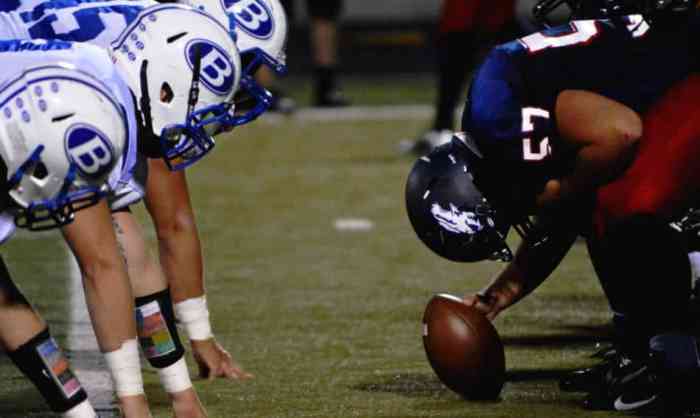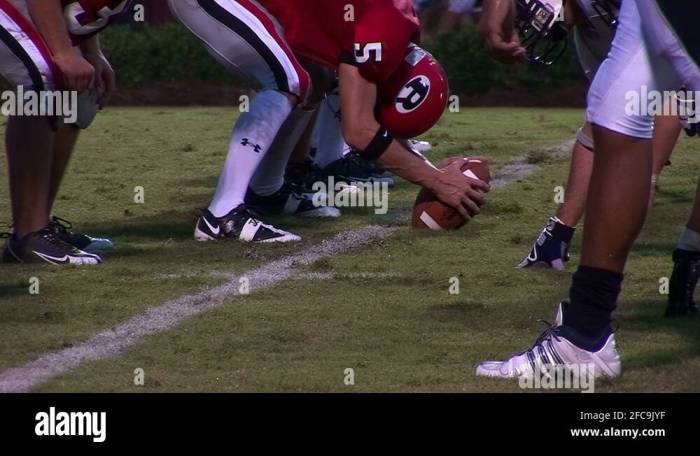Prior to instruction a teacher/coach lets the football team scrimmage – Prior to instruction, a teacher/coach lets the football team scrimmage, providing a valuable opportunity for players to enhance their skills and team cohesion. This practice allows teams to refine their strategies, improve communication, and foster a sense of unity before engaging in competitive matches.
Scrimmages serve as a crucial training ground, enabling players to test their abilities in a controlled environment. By simulating game-like situations, scrimmages help players develop their decision-making, execution, and adaptability on the field.
Importance of Scrimmages Before

Scrimmages are an essential part of football practice, providing players with the opportunity to put their skills into action and prepare for game-day situations. They allow coaches to assess player performance, identify areas for improvement, and foster team cohesion.
Benefits of Scrimmages
- Improve player performance by providing a realistic game-like environment.
- Enhance team cohesion by encouraging communication, collaboration, and trust.
- Identify areas for improvement by highlighting strengths and weaknesses in player execution.
- Provide coaches with valuable data for making informed decisions about player placement and strategy.
Statistics and Studies
Numerous studies have shown the positive impact of scrimmages on player performance and team cohesion. For example, a study by the American Football Coaches Association found that teams that participated in more scrimmages had a higher win rate than teams that participated in fewer scrimmages.
Planning and Preparation for Scrimmages
Planning and preparation are crucial for successful scrimmages. Key factors to consider include team size, skill level, and time constraints.
Step-by-Step Guide
- Determine the purpose and objectives of the scrimmage.
- Select a suitable location and time.
- Establish rules and safety guidelines.
- Assign roles and responsibilities to players and coaches.
- Prepare the field and equipment.
- Warm up players and conduct drills.
Sample Scrimmage Schedule
A typical scrimmage schedule might include:
- 10-15 minutes of warm-ups
- 15-20 minutes of individual drills
- 30-45 minutes of scrimmage play
- 10-15 minutes of cool-down and review
Types of Scrimmages

Different types of scrimmages serve different purposes and are appropriate for different skill levels.
Full-Contact Scrimmages
Full-contact scrimmages involve full tackling and blocking. They are typically used to prepare players for game-day situations.
Half-Contact Scrimmages, Prior to instruction a teacher/coach lets the football team scrimmage
Half-contact scrimmages allow players to tackle above the waist. They are a good option for teams with less experience or who are recovering from injuries.
Non-Contact Scrimmages
Non-contact scrimmages do not involve any tackling or blocking. They are used primarily for skill development and to avoid injuries.
Coaching During Scrimmages: Prior To Instruction A Teacher/coach Lets The Football Team Scrimmage

Coaches play a vital role during scrimmages, providing feedback, guidance, and encouragement to players.
Tips for Effective Coaching
- Observe player performance closely and provide constructive criticism.
- Identify and correct mistakes while reinforcing positive play.
- Motivate players and encourage them to push their limits.
- Use scrimmages as an opportunity to experiment with different strategies and formations.
- Foster a positive and supportive learning environment.
Safety Considerations
Safety is paramount during scrimmages. Proper precautions should be taken to minimize the risk of injuries.
Safety Equipment
Players should wear appropriate safety equipment, including:
- Helmets
- Shoulder pads
- Elbow pads
- Knee pads
- Cleats
Medical Personnel
A qualified medical professional should be present at all scrimmages to provide immediate assistance in case of injuries.
FAQ Section
What are the benefits of scrimmages prior to instruction?
Scrimmages allow players to practice their skills in a game-like setting, improve communication and teamwork, and identify areas for improvement.
How should teams prepare for scrimmages?
Teams should consider factors such as team size, skill level, and time constraints when planning scrimmages. They should also establish clear rules and objectives for each scrimmage.
What are the different types of scrimmages?
There are various types of scrimmages, including full-contact, half-contact, and non-contact scrimmages. Each type has its own advantages and disadvantages, depending on the specific training goals.